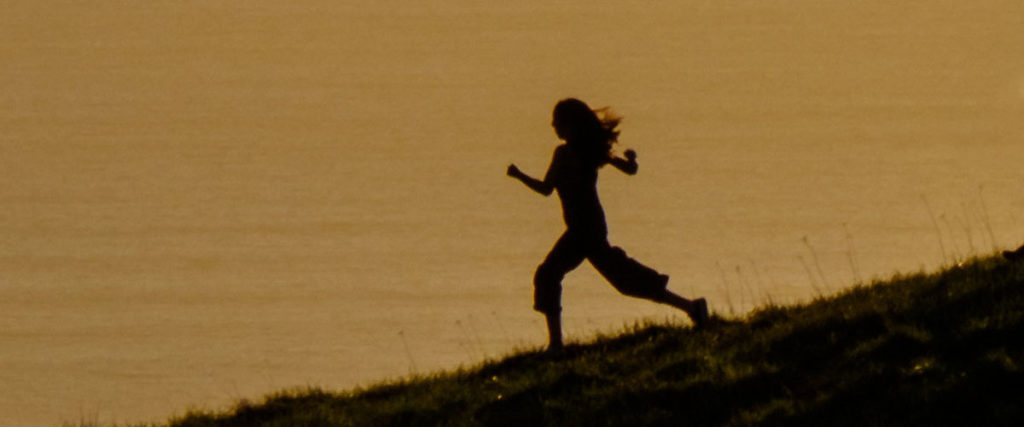This article is about the dangers of Yin Yoga and is written for yoga teachers and practitioners. This article is not written to say “Yin Yoga is bad” or “We hate Yin Yoga” – many in our team practice and like YY.
At the same time we regularly see people in our practices and courses that got injured or whose health got worse through YY: They develeoped hypermobility, became physically and emotionally unstable and even were less flexible than before their practice.
This article was born, because we saw multiple articles making very making the one sided claims:
- Yin Yoga IS good for tissue health
- Yin Yoga IS good for your nervous system
- Yin Yoga WILL help you relax
- You NEED Yin Yoga if you are stressed
- …
Even if we believe that YY CAN be good for your tissues and relaxation, we know it IS NOT always. There are clear points where it is not helpful and even harmful.
Yes, Yin Yoga can be harmful. And since YY often takes place at the edge of pain many student and teachers do not recognize these moments when they arise. When you already are experiencing discomfort it is easy to overlook your healthy emotional or physical boundaries.
Hoping that this will happen less, we want to explore two claims about Yin Yoga:
CLAIM 1:
YY is good for tissue health and flexibility
It is often claimed that
- Yin Yoga increases flexibility
- Lengthy stretches support tissue health
- And help the tissue to relax and regenerate
Where this is true and has a physiological background:
Joints, tissues and organs benefit from regular movement. And different types of tissues need different types of movement.
Especially fascia needs lengthy stretches to stretch and relax. So YY is beneficial for fascia.
If we want to lengthen fascia and support fascial relaxation it is beneficial to:
- Stretch the facia = Lengthen it to ist current level of flexibility
- Perceive = Sensing our physical sensations especially in the area we are stretching
Signal to ourselves and the fascia: Let go – no reason to tense
Where this is not true and potentially dangerous:
YY is good for fascia. But fascia is never isolated in the body: Whenever we are stretching any fascia, we are always stretching so called myofascial-trains (chains of connected fascia, muscles, joints and nerves).
These tissues fascia is connected to have completely different functions, needs and boundaries. So different in fact, that prolonged strain on some of these tissues can lead to pain and problems.
This is most true for our nerves: Because nerves cannot be strechted and trying to lengthen them can lead to injury.
- Have you ever felt a sharp-electric pain in your arms or legs while stretching?
- Do you know this burning sensation after your leg fell asleep?
Congratulations, you have felt your nerves! Through their pain they tell you pretty clearly: „STOP. I do not want to be stretched!”
When we unintentionally try to stretch a nerve during a Yin-Yoga-Asana, it is not just unneccesarily painful, but
- It can inflame the nerve and injure it
- Change our perception of the area and its physical boundaries
- And lead to a lasting decrease in flexibility because our muscles tense to protect the nerves
This can then lead to soreness the day after a practice – especially in the areas we tried to stretch. This would be a very normal sign that we tried to stretch tissue that does not want to be stretched.
(One aditional point that is important to remember with YY: The practice is very specialized on stretching tissue. We also need a strengthening and fast movements for holistic health – this needs a different movement practice.)
What you can do during Yin Yoga Practice:
For yourself:
- Learn to discern different types of tissue – Either through anatomic background knowledge OR by learning to discern different types of pain: Sharp-electric pain that shoots through your body means you are probably trying to stretch a nerve – this is a clear STOP from your body and it makes sense to respect that.
- To work with the nerve you can use the so called nerve-mobilisation to support the nerve in its „slipperiness“. For this check out our Video.
- If you just want to do your YY-Practice, try finding a position in which the pain feels more like „Melting-pleasurable pain-AAAAHHH“
As a Yoga Teacher:
- Introduce both kinds of pain to your students
- Sharp-electric
- Melting-pleasurable
- Pay attention to student’s faces
- Nerve-pain usually shows up as if somebody bit into a lemon
- Fascia-pain often looks more as if somebody is melting into something
- Offer different positions and the nerve-mobilisation as a technique so that students can choose
- You can introduce this as an experiment: “See if it is better for you to move your leg like this a bit…”
CLAIM 2:
Yin Yoga is good for your Nervous System
Another claim about Yin Yoga is:
- YY helps you relax
- It activates the Parasympathetic Nervous System
- YY helps you process old emotions
When this can be true:
All of the above can be true, IF you have enough emotional and nervous system stability (containment) to actually be with whatever might come up in you.
- As long as the streching, pulling, pain is not overwhelming it can be relaxing.
- As long as we can contain triggered emotions this can be releasing and thus help us relax long term.
If the above mentioned points are true, YY can be a wonderful practice, because then it can
- Activate the so called „Relaxation Response“
- Increase awareness of our body
- And through the asanas activate the vagus nerve in our sacrum
When this can be dangerous:
As soon as experiences, perceptions and positions become too much and overwhelming they can trigger exactly the opposite of relaxation. And this can happen very quickly in traumatized or stressed people. To understand this, we need to cover one important insight from current research:
Physiological Overview:
We do not have just one „Parasympathetic Nervous System“
Many articles talk about activating THE Parasympathetic Nervous System (PNS).
This is based on an older understanding of our Neurophysiology that assumes we have just one PNS. Based on modern Trauma Research we can now say: We have two branches within the PNS:
- RELAXATION (ventrovagal ‚branch“ of the PNS, often called green): This is what is traditionally called the PNS. This is the branch that is responsible for relaxation, letting go, recharging etc.
- FREEZE and COLLAPSE (dorsovagal ‚branch’ of the PNS, often called red): This branch has been studied extensively in the past 30 years. It is responsible for Trauma, freeze, playing dead…
Even if it looks similar to relaxation from the outside (less movement, loose muscles…) it is a completely different state in the Nervous System. This is the reaction our Neurophysiology activates if it thinks we might die soon and thus starts our oldest survival pattern: Stop moving, freeze,, play dead, dissociate to not feel the pain.
It is important to understand that this does not have to be a reaction to an actually life threatening event. This reaction can be triggered by memories, certain sensations, postures…
Especially traumatized people (no matter if Shock or Developmental Trauma) find it a lot harder to access true relaxation and often get stuck in freeze responses.
Back to Yin Yoga:
Whenever we hold painful and exposed postures (e.g.. Stretchin M. Iliospoas, Opening the Heart) our nervous system can easily be triggered.
If I can truly relax while this is happening (ventrovagal – green) and my Nervous System can regulate this can lead to actual healing and long lasting relaxation.
If on the other hand I cannot relax, I experience the situation as overwhelming (even if just subtly) yet stay in the same posture, it is much more probable that I my system will go into a Freeze (dorsovagal – red).
From a trauma-therapeutic perspective it is problematic to try and „relax into a Freeze“. When we are in such an activation (based on stress, past experiences) we are usually in a state, where we cannot just decide to relax – on a neurophysiological level the parts of our brain responsible for relaxation have shut down already.
What actually does help in situations like this (and often is our physical impulse) is to change the situation we are in, stand up for ourselves and say NO! For this it can be helpful to tense our muscles, change the position and feel our own power.
When we do this, we use our resources to cope with the situation at hand. This allows us to activate the Sympathetic Nervous System (orange) which most people experience as empowering and powerful.
This is why in trauma-sensitive Bodywork these physical impulses are not just tolerated but actively invited and celebrated.

What you can do during Yin Yoga Practice:
For yourself:
- Pay attention: What are your boundaries? Where are they today?
- Create small experiments for yourself: Is it better to tense your muscles and feel your own power? Does this allow you to feel yourself more clearly? Can you relax more afterwards?
- If a situation dpes not work for you: What can you do, to improve this situation? What can you change about this position? Do you want to use your muscles against the stretch? Is it better for you to move out of this asana and take a break?
- Where do you want to put your awareness? Inside your body? Outside your body?
As a Yoga Teacher:
- Set a clear container in which it is OK for your students to stay at their own boundary and actively end / change positions or take a break if that feels important to them.
- Actively invite them to experiment:
- How can you improve the position for yourself?
- Is it better to tense your muscles? Can they relax afterwards?
- Where do you want to put your awareness? Inside or outside? On the stretch or the plant in the corner?
This allows you and your students to have experiences of empowerment and competency.
Summary
As already said in the beginning: Yin Yoga can be great. It can help you relax and lengthen your fascia.
But:
- Pay attention to you nerves.
- And pay attention to your nervous system.
This will make the practice more powerful for yourself and your students!


